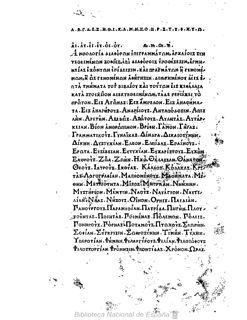 W
WThe Greek Anthology is a collection of poems, mostly epigrams, that span the Classical and Byzantine periods of Greek literature. Most of the material of the Greek Anthology comes from two manuscripts, the Palatine Anthology of the 10th century and the Anthology of Planudes of the 14th century.
 W
WThe Anthology of Planudes, is an anthology of Greek epigrams and poems compiled by Maximus Planudes, a Byzantine grammarian and theologian, based on the Anthology of Cephalas. It comprises 2,400 epigrams.
 W
W"The Blind Man and the Lame" is a fable that recounts how two individuals collaborate in an effort to overcome their respective disabilities. The theme is first attested in Greek about the first century BCE. Stories with this feature occur in Asia, Europe and North America.
 W
WThe Crow and the Pitcher is one of Aesop's Fables, numbered 390 in the Perry Index. It relates ancient observation of corvid behaviour that recent scientific studies have confirmed is goal-directed and indicative of causal knowledge rather than simply being due to instrumental conditioning.
 W
WThe reason for the hare to be in flight is that it is an item of prey for many animals and also subject to hunting by humans. There are three fables of ancient Greek origin that refer to hare chasing, each of which also exemplifies a popular idiom or proverb.
 W
WThe Palatine Anthology, sometimes abbreviated AP, is the collection of Greek poems and epigrams discovered in 1606 in the Palatine Library in Heidelberg. It is based on the lost collection of Constantinus Cephalas of the 10th century, which in turn is based on older anthologies. It contains material from the 7th century BC until 600 AD and later on was the main part of the Greek Anthology which also included the Anthology of Planudes and more material.
 W
WThe Goat and the Vine is counted as one of Aesop's Fables and is numbered 374 in the Perry Index. There is also a West Asian variant.